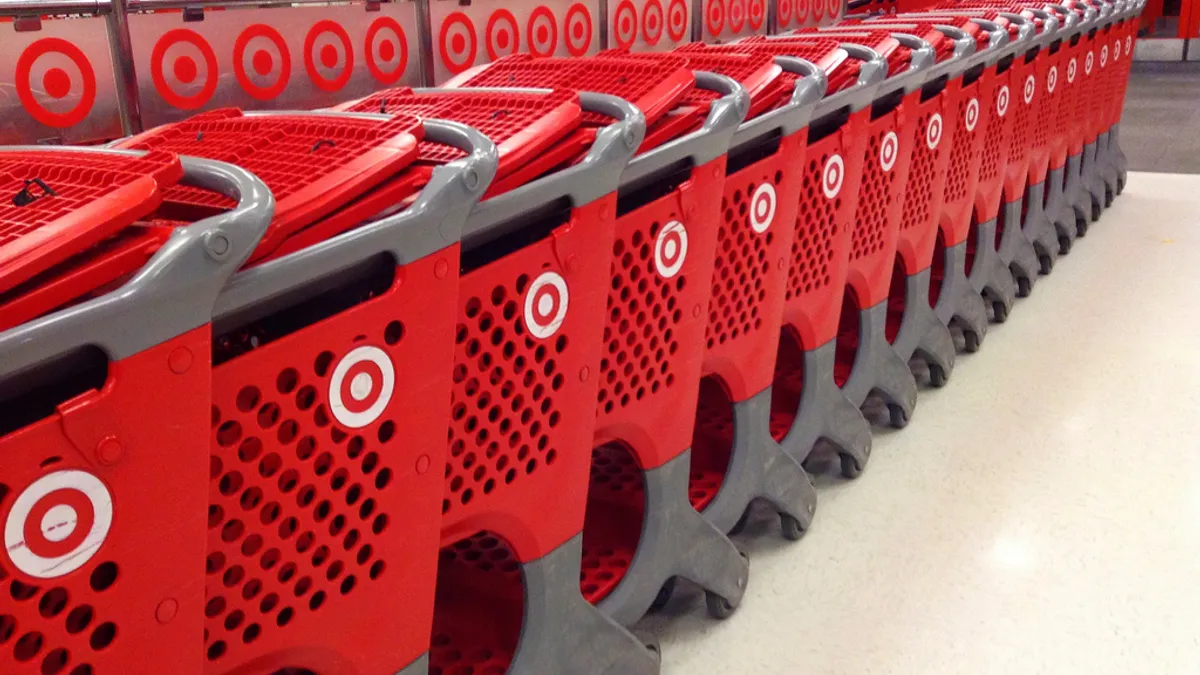Corporate sustainability is about peer pressure. Some corporations may change practices to reduce emissions and overall extractive impact on the planet of their volition, but competition helps. In 2019, one retailer upped the pressure for its entire class: Target.
In March, Target announced emissions goals. The company had set sustainability goals before. Reducing greenhouse gas emissions by 25% by 2025 was the most recent. But this plan was different.
Target committed to reduce emissions by 30% by 2030 (based on 2017 levels) in cooperation with the Science-based Targets Initiative. And within that 30%, Target set a goal of bringing 80% of its suppliers on board — asking them to set science-based targets by 2023.
Science-based targets are emissions reduction goals set in line with the level of decarbonization required to keep global temperature increase below 2 degrees Celsius compared to pre-industrial temperatures. Setting these targets first requires an understanding of current emissions.
According to Sonya Bhonsle, the head of CDP’s supply chain program, the act of setting targets puts Target ahead of most retailers. Just seven U.S.-headquartered retailers have committed to the initiative.
Even among those few, Target has gone farther than most.
The retailer has included all three "scopes" of emissions in its plan — meaning it's taking responsibility for the emissions of its operations and those linked to the products on its shelves.
Emissions breakdown
| Scope 1 | Direct emissions including owned vehicles and owned or controlled facilities and grounds. |
|---|---|
| Scope 2 | Emissions stemming from purchased power including electricity, heating and cooling, steam, or any other power source. |
| Scope 3 | Indirect emissions not included in scope 2 including all procurement, direct and indirect, along with travel waste and water. |
A Target spokesperson told Supply Chain Dive the retailer arrived at its 2030 goal after conducting "a full value chain footprint inventory," with the help of a sustainability consultancy.
The audit led the company to realize in order to reach the 30% goal, it would need to take a bite out of its largest source of emissions — scope 3.
Retailers have direct control over scopes 1 and 2, meaning those emissions are somewhat easier to reduce. Levers Target will pull to reduce scopes 1 and 2 emissions include transitioning to wind and solar power sourcing for stores, improving the energy efficiency of stores and boosting energy and water efficiency in the manufacturing facilities the company owns. Scope 3 brings vendors into the conversation.
"Most Target suppliers have very singular focuses of keeping Target."

Sonya Bhonsle
Global Head of Supply Chain, CDP
According to Bhonsle, the main lever to pull in reining in scope 3 emissions is spend — how much spend goes to which vendors.
"If you can switch from a high carbon-intensive purchasing line to a lower carbon-intensive purchasing line, then you absolutely should and we have seen companies do that," said Bhonsle. Switching from a high-carbon supplier to a lower-carbon supplier could be a fairly simple fix, if one exists. Without a comparable alternative supplier, existing suppliers need to change.
"We’ll work with our suppliers to transition to renewable energy sources and implement their own emissions reduction projects," said the spokesperson.
So how will those conversations go?
"In many cases the purchaser and the supplier see it as a collaborative endeavor — something that's positive that they can do together and they get equally excited about it in my experience," said Bhonsle. At the end of the day, she added, Target sits "at the top of the food chain" and suppliers are likely to get on board.
"Most Target suppliers have very singular focuses of keeping Target," she said.
| Retailer | Science-based targets? |
|---|---|
| Target | ✓ |
| Amazon | X |
| Walmart | ✓ |
| Costco | X |
Plenty of brands and retailers announced sustainability plans in 2019. The comprehensiveness, feasibility and ambition of these plans ran the gambit.
In selecting Target for sustainability plan of the year, Supply Chain Dive recognizes the work, commitment and complexity involved in setting emissions reduction targets and acknowledging and incorporating scope 3 emissions into those goals.
For supply chains as large and complex as Target's, this effort will reverberate throughout the retailer's network and potentially set in motion more sustainable operations in hundreds of other supply chains.




 Read more
Read more









